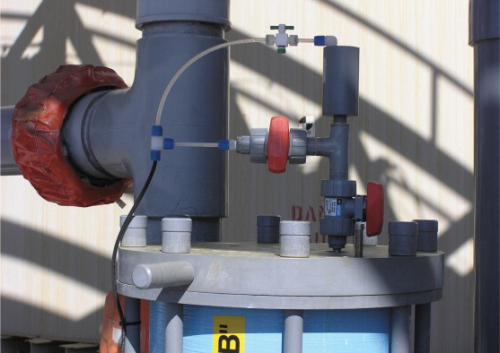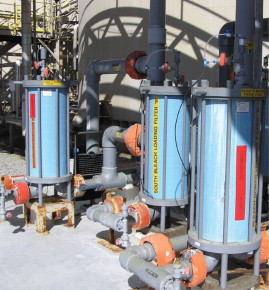

The manufacture of bleach has come a long way since the early years of the Industrial Revolution. Back in 1799, Scottish chemist Charles Tennant patented a lime powder that was manufactured by treating lime with water, spread thinly over the concrete floor. Chlorine gas was then pumped into the room and absorbed by the lime. This development of bleaching powder as a source of chlorine by Tennant revolutionised bleaching processes in the textile industry and led to a prolific expansion in the production of more stable, high quality bleaches.
Today, there are numerous chemical companies that produce sodium hypochlorite bleach to meet the increasing worldwide demand of whitening and disinfecting applications. Though the basic chemistry for manufacturing bleach is a matter of common knowledge within the field of chemical engineering, the manufacturing process is quite the opposite. The specific processes of production can be varied, quite complex, and involve numerous patents.
One of the leading manufacturers is Olin Corporation. Olin has been involved in the U.S. chlor alkali industry for more than 100 years and is the third largest producer in the North American chlor alkali market. The Chlor Alkali Products Division manufactures chlorine and caustic soda, sodium hydrosulphite, hydrochloric acid, hydrogen, potassium hydroxide and bleach products. Olin is in fact the largest producer in North America for industrial bleach with ten plants located across North America. Recently, Olin spent $11.8 million expanding its bleach production at the Augusta, GA; Charleston, TN; and Niagara Falls, NY, plants. These expansions increased capacity; doubling the number of truck-loading stations, and introduced new production and filtration equipment, storage tanks, controls, infrastructure, and other related equipment.
Olin Chlor Alkali Products' Augusta plant is located in the heart of the Southeastern paper and textile industrial markets and a large part of the production at this facility is industrial bleach. The bleach process engineer, Patrick Hollingsworth, oversees this operation and continually seeks to improve manufacturing efficiencies. A key area of concern has historically been the filtering stage that removes any impurities that can discolour the bleach or catalyse its decomposition. This is generally the last stage in the production process before the bleach is shipped to their customers.
The filtering stage consists of several CPVC filter housings that contain a manual vent on top of each filter. During the filtration process, the bleach would create gas build-up inside each filter housing occupying nearly half of the capacity of the housing. Consequently, the effectiveness of the filter cartridges would be greatly reduced. The bleach was only able to reach the lower half of the filter cartridge, minimising the filtration effect. In order to relieve the gas build-up, the filter housing would have to be manually vented once per day. This continual problem created numerous issues for Hollingsworth. The first issue was the safety factor of a contained volatile gas. The second issue was the cost of time venting the filters on a daily basis. The third issue was the decrease in flow rate as the gas would build-up within the filter housing, thereby slowing the complete bleach process. The last issue was the uneven wear of each filter cartridge. The fact that the gas prevented the bleach from thoroughly entering the filter housing resulted in half the cartridge being used.
In an effort to resolve these ongoing issues, Hollingsworth decided to install a Plastomatic CPVC degassing valve (DGV) above each filter housing. The DGV is isolated between two manual ball valves, (i.e. the True Blue POM Ball Valve), which are placed between a tee and connected to the top of the filter. The Plastomatic degassing valve is a normally open valve and is designed to vent small volumes of gas as they accumulate at high points in a system while it is operating and pressurised. Furthermore, as the outgassing from the liquid occurs and accumulates, it displaces an equal amount of liquid causing the float to lower/drop, opening the orifice and venting the gas. As the gas is released, the liquid level again rises, lifting the float and closing the valve orifice. This cycle repeats itself as often as the gas accumulates in the valve. Plastomatic's patented DGV is continuous and automatic as opposed to the manual venting method.
The addition of the Plastomatic degassing valves resolved all of the issues regarding the filtration of the sodium hypochlorite bleach. Since the gas was immediately released through the DGV and dispersed, safety was less of a concern. The elimination of manually venting on a daily basis has saved valuable time as the gas is now continuously and automatically vented.
The flow rate has increased due to lack of any restrictions caused by the gas build-up. Finally, the filter cartridges within the filter housings are experiencing normal wear due to the complete filtration of the bleach. Needless to say, the installation of the Plastomatic degassing valves above the filter housings has greatly eased the filtration process of sodium hypochlorite bleach.




